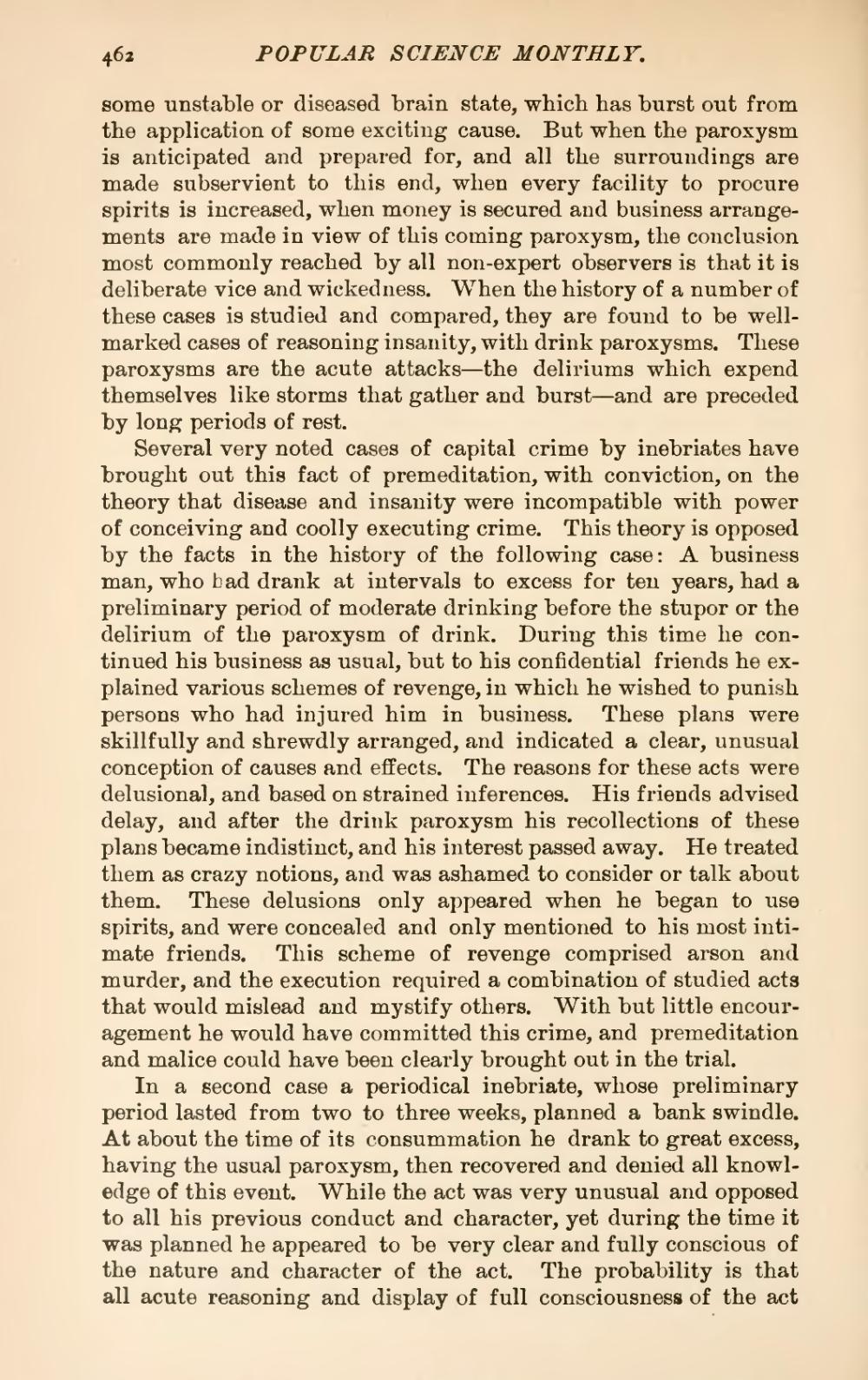some unstable or diseased brain state, which has burst out from the application of some exciting cause. But when the paroxysm is anticipated and prepared for, and all the surroundings are made subservient to this end, when every facility to procure spirits is increased, when money is secured and business arrangements are made in view of this coming paroxysm, the conclusion most commonly reached by all non-expert observers is that it is deliberate vice and wickedness. When the history of a number of these cases is studied and compared, they are found to be well-marked cases of reasoning insanity, with drink paroxysms. These paroxysms are the acute attacks—the deliriums which expend themselves like storms that gather and burst—and are preceded by long periods of rest.
Several very noted cases of capital crime by inebriates have brought out this fact of premeditation, with conviction, on the theory that disease and insanity were incompatible with power of conceiving and coolly executing crime. This theory is opposed by the facts in the history of the following case: A business man, who had drank at intervals to excess for ten years, had a preliminary period of moderate drinking before the stupor or the delirium of the paroxysm of drink. During this time he continued his business as usual, but to his confidential friends he explained various schemes of revenge, in which he wished to punish persons who had injured him in business. These plans were skillfully and shrewdly arranged, and indicated a clear, unusual conception of causes and effects. The reasons for these acts were delusional, and based on strained inferences. His friends advised delay, and after the drink paroxysm his recollections of these plans became indistinct, and his interest passed away. He treated them as crazy notions, and was ashamed to consider or talk about them. These delusions only appeared when he began to use spirits, and were concealed and only mentioned to his most intimate friends. This scheme of revenge comprised arson and murder, and the execution required a combination of studied acts that would mislead and mystify others. With but little encouragement he would have committed this crime, and premeditation and malice could have been clearly brought out in the trial.
In a second case a periodical inebriate, whose preliminary period lasted from two to three weeks, planned a bank swindle. At about the time of its consummation he drank to great excess, having the usual paroxysm, then recovered and denied all knowledge of this event. While the act was very unusual and opposed to all his previous conduct and character, yet during the time it was planned he appeared to be very clear and fully conscious of the nature and character of the act. The probability is that all acute reasoning and display of full consciousness of the act

